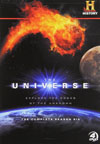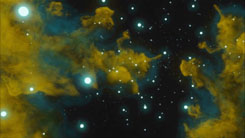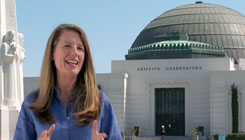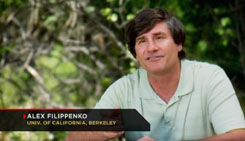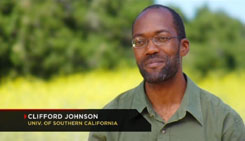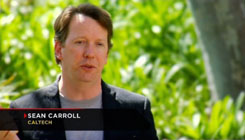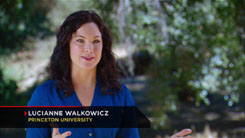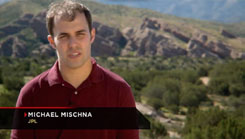This is a fairly nice episode touching on a good number of subjects,
all tied into the concept of discovering what's really close to us
in our corner of the galaxy.
The first segment defines the galactic habitable zone,
detailing the lack of complex chemistry beyond its outer boundary,
and the higher radiation and collision rate beyond its inner boundary.
We also take a look at the Rosette Nebula,
where an O-type blue giant devastates many other stars with
its intense radiation. Good thing it's about 5200 light years away.
Alex Filippenko:
"Our exact position in the Milky Way galaxy
relative to the arms actually isn't known.
Some people think there are two major arms.
Some people think there are four major arms.
It's hard for us to determine
the exact structure of our Milky Way,
because it's kind of like a mouse being inside a maze.
You don't get the big picture."
(Interesting, because the last I had heard
the Milky Way had five major arms,
each named after a constellation.)
Check out this image:
Five Spiral Arms in the Milky Way?
Here's another:
Six Spiral Arms?
The second segment describes the nature and importance of
the Heliosheath - a protective bubble around the solar system
stemming from the interaction of the sun's magnetic field and solar winds.
As the Voyager 1 & 2 spacecraft exit the solar system,
they indicate that the layers of this sheath are much
more complicated than previously predicted.
We also get good demonstration of the ability of telescopes
to use different EM wavelengths to see through galactic objects.
Segment Three touches on the high degree of variance in stars'
orbits around the galaxy, especially the example of
Gliese 710: an orange dwarf star 63 LY from Earth... which is
approaching us. We get some speculation about how,
a million years from now, it might
interact with the Oort Cloud surrounding our solar system at
a distance of 1 light year.
Segment four rattles through a lot of objects near to us
in the galactic neighbourhood. The stellar objects include:
- Alpha Centauri
- Sirius
- red dwarfs
- brown dwarfs - in a nearby group discovered by WISE,
there is one with a temperature of only 80 degrees Fahrenheit.
Exoplanets and other worlds discussed include:
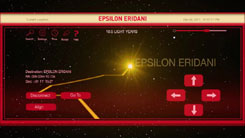
- Epsilon Eridani b (10.5 LY)
- Kepler 16b (200 LY, orbiting 2 stars)
- "homeless" planets
- the 2011 discovery of Pluto's 4th moon
There's a lot of good info here, but it really just whets the appetite
without really going into enough depth to satisfy.
Segment five is unfortunately framed from a threat-assessment mindset,
while talking about our closest supernova candidates in the galaxy
(Filippenko's speciality).
- Betelgeuse (640 LY away)
- HR 8210 (150 LY away in Pegasus)
Added to this is the concept that, because our sun is moving at its own
speed, we will be much further away from HR 8210 if and when it blows,
but we will also eventually pass more deeply into a spiral arm,
where stars going supernova are more common. Still, most of these
events are far in our future on a timescale of millions of years.
|
Participants include:
|
And the "Ask the Universe" question for this episode is:
"Why are stars so many different colors?"
-Anna K., Baton Rouge, LA
Chapter List:
- Galactic Habitable Zone
- Magnetic Fields
- Unpredictable Neighbors
- Exoplanets
- Supernova Explosions
|
|
